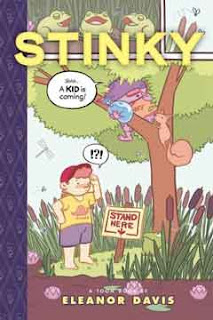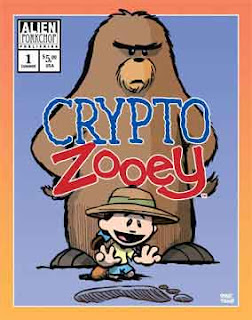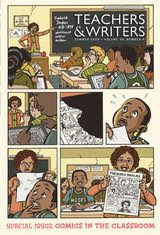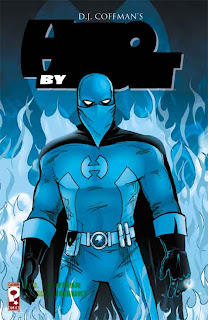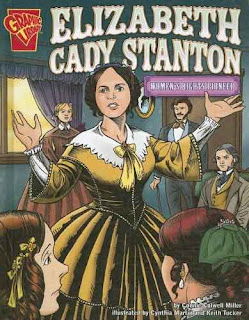

By Chris Wilson
Editor-in-Geek
AUTHOR: Connie Colwell Miller
ILLUSTRATOR: Cynthia Martin & Keith Tucker
CONSULTANT: Melodie Andrews, Ph.D., Minnesota State University
PUBLISHER: Capstone Press
GENRE: Nonfiction
FORMAT: Reinforced library binding
PAGES: 32
COLOR: Full color
ISBN-10: 0-7368-4971-8
ISBN-13: 978-0-7368-4971-5
REVIEW
Women’s rights advocate, Elizabeth Cady Stanton, is a staple in elementary education - a woman of strength and progressive thought whose death preceded her intended goal. Like most strong women, Stanton’s views were considered edgy and controversial. Despite the poor treatment of women she continued her fight to end discrimination in the face of strong opposition by powerful men. This strong woman, who knew her place was not relegated only to the home and child rearing, was an instrumental and influential force in the women’s suffrage movement.
The story is short and offers a primer on the life and times of a woman who refused to live with oppression and discrimination, a small portrait of one woman’s life.
ART REVIEW
One- and two-panel pages are combined with generous amounts of dialogue and narration bubbles to make for significant factual information, without the burden of dense paragraphs. The art is heavily inked and bright.
AGE RECOMMENDATION
Chris’ Rating: Ages 8 and older
Publisher’s Reading Level: Grades 3-4
Publisher’s Interest Level: Grades 3-9
Guided Reading Level: S
Lexile: 580L
ATOS: 4.0
AR Quiz No.: 101342
Dewey: 305.42/092
Most students under age 8 would not be ready for the vocabulary, otherwise there is nothing preventing younger children from accessing the book.
IN THE CLASSROOM
This short biography gives the young reader a glimpse into the struggles and trials of one of America’s most influential women and the forces of opposition that stood in her way. The lesson is a strong one for all children - boys, girls, ethnic minorities, persons with disabilities, those in poverty - one person can make a difference in a democracy and affect the lives of everyone in an oppressed group. It takes education, determination, perseverance, and alliances with like-minded spirits to achieve a goal greater than one’s self.
OTHER INFORMATION
Capstone offers an additional facts list, a glossary, Internet sites, an index, and a bibliography.
CHRIS’ RECOMMENDATION:
Recommended
Children need to learn about democracy and how to affect change appropriately and civilly. That begins with studying some of the great advocates of history, including Elizabeth Cady Stanton.
Editor-in-Geek
AUTHOR: Connie Colwell Miller
ILLUSTRATOR: Cynthia Martin & Keith Tucker
CONSULTANT: Melodie Andrews, Ph.D., Minnesota State University
PUBLISHER: Capstone Press
GENRE: Nonfiction
FORMAT: Reinforced library binding
PAGES: 32
COLOR: Full color
ISBN-10: 0-7368-4971-8
ISBN-13: 978-0-7368-4971-5
REVIEW
Women’s rights advocate, Elizabeth Cady Stanton, is a staple in elementary education - a woman of strength and progressive thought whose death preceded her intended goal. Like most strong women, Stanton’s views were considered edgy and controversial. Despite the poor treatment of women she continued her fight to end discrimination in the face of strong opposition by powerful men. This strong woman, who knew her place was not relegated only to the home and child rearing, was an instrumental and influential force in the women’s suffrage movement.
The story is short and offers a primer on the life and times of a woman who refused to live with oppression and discrimination, a small portrait of one woman’s life.
ART REVIEW
One- and two-panel pages are combined with generous amounts of dialogue and narration bubbles to make for significant factual information, without the burden of dense paragraphs. The art is heavily inked and bright.
AGE RECOMMENDATION
Chris’ Rating: Ages 8 and older
Publisher’s Reading Level: Grades 3-4
Publisher’s Interest Level: Grades 3-9
Guided Reading Level: S
Lexile: 580L
ATOS: 4.0
AR Quiz No.: 101342
Dewey: 305.42/092
Most students under age 8 would not be ready for the vocabulary, otherwise there is nothing preventing younger children from accessing the book.
IN THE CLASSROOM
This short biography gives the young reader a glimpse into the struggles and trials of one of America’s most influential women and the forces of opposition that stood in her way. The lesson is a strong one for all children - boys, girls, ethnic minorities, persons with disabilities, those in poverty - one person can make a difference in a democracy and affect the lives of everyone in an oppressed group. It takes education, determination, perseverance, and alliances with like-minded spirits to achieve a goal greater than one’s self.
OTHER INFORMATION
Capstone offers an additional facts list, a glossary, Internet sites, an index, and a bibliography.
CHRIS’ RECOMMENDATION:
Recommended
Children need to learn about democracy and how to affect change appropriately and civilly. That begins with studying some of the great advocates of history, including Elizabeth Cady Stanton.






